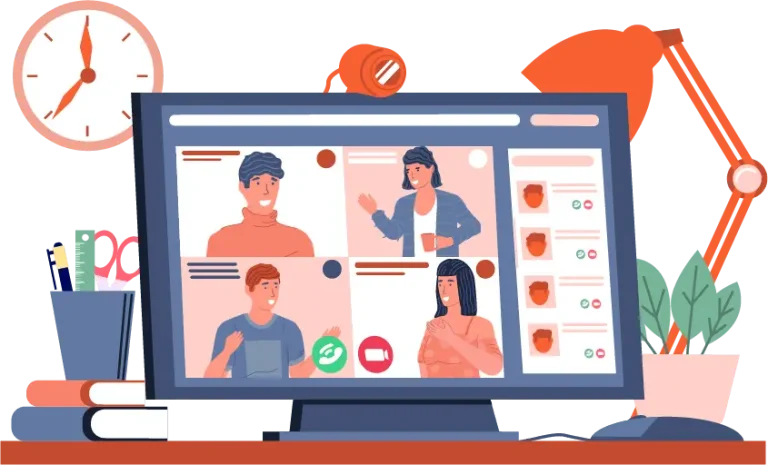Microteach sessions bridge the gap between teaching education and teaching practice in real or simulated environments. In the Level 5 Diploma in Teaching (Further Education and Skills), trainee teachers engage in a short yet focused activity, delivering a brief lesson to their peers that typically lasts 15 to 30 minutes.
Key Takeaways:
- Microteaching provides a structured, low-pressure space for trainee teachers to refine delivery techniques and build confidence through peer interaction and professional feedback.
- Thoughtful planning and clear objectives help translate educational theory into practice, emphasising adaptability, inclusivity, and effective classroom management in a simulated environment.
- The process encourages reflective growth and self-evaluation, helping educators cultivate habits of accountability, responsiveness, and continuous improvement in teaching practice.
Microteach session provides an opportunity for trainee teachers to plan, deliver short lessons, manage the group, observe other peers in session, give and respond to feedback. It helps trainees to think critically about their teaching strategies and methods. It also enables them to translate pedagogical theory into practice, bringing together a range of elements from inclusive learning strategies and assessment techniques to classroom presence.
Moreover, through this, trainee teachers will assess their confidence, as well as have opportunities for self-evaluation and peer feedback, providing a space to grow.

What is the Purpose of the Microteach in DiT?
Microteaching is typically a formative or developmental activity, delivered to peers, and is considered a separate teaching or training session.
The microteach session lasts for 15 to 30 minutes and is delivered to the peers. This practice does not include the 250 hours of professional practice, nor does it count towards the 10 mandatory teaching observations essential to complete the Diploma in Teaching FE & Skills (DiT). Microteaching is a requirement of the Professional Practice unit as a developmental activity alongside other practical requirements.
A microteach session creates a space where feedback is more direct, and mistakes become learning opportunities rather than disruptions. Its goal is not to cover a broad syllabus but to focus on teaching approaches, delivery techniques, and classroom management in bite-sized form. It provides an opportunity to listen to the feedback of peers and mentors and improve the teaching strategies and practices. It is a valuable part of professional growth within the DiT.
Ofqual regulates the Level 5 Diploma in Teaching (DiT – FES) to ensure that it meets national standards for validity and quality. It states that “each trainee teacher must deliver at least one 15-minute microteaching session that is observed and assessed”, and that additional time may be spent delivering or observing others’ microteaching. This approach enables trainees to plan, deliver, assess, and reflect on a short teaching episode without the pressure of a live, full-sized class.
From a logical standpoint, microteaching bridges the gap between theory and practice. In the earlier stages of the DiT, trainees are still developing skills in lesson planning, classroom management, and the use of inclusive strategies. Microteaching offers a safe, low-stakes platform to trial these skills, receive targeted feedback, and refine their practice before applying it in real classroom settings. It also helps trainees develop professional confidence, test varied teaching methods, and adapt to unexpected challenges, skills that are essential for effective teaching but difficult to acquire purely from theory.
Preparing for the Microteach Session
Microteaching involves putting every part of the teaching cycle into motion, even within a limited timeframe. Preparation sets the tone. A strong plan reflects not only subject knowledge but also awareness of learner needs, delivery choices, and professional responsibilities.
Choosing a Topic
Start with your subject specialism. Pick a topic that fits comfortably into a 15–20-minute slot. Avoid anything too broad or dependent on prior knowledge that your peers might not have. The best topics are clear, focused, and allow you to demonstrate a teaching approach, not just deliver content.
Setting Clear Aims and Objectives
Use SMART objectives, specific, measurable, achievable, relevant, and time-bound, to make the clear goals of the microteach session. The aim should match your baseline knowledge while still offering something valuable.
Planning Resources and Activities
Prepare resources to support the delivery of the session. Prepare PowerPoint slides, handouts, and visual aids for learning. Do not overload the session with materials; choose what fits the time and purpose.
Risk Assessment
You are expected to apply professional standards even in a simulated environment. Consider potential barriers such as resource preparation, inclusivity and visual aids. You should also take into account wider institutional policies, health and safety, safeguarding principles, and Equality, Diversity and Inclusion (EDI). These exercises are essential to real-life teaching, and microteaching is a space to start applying them, even if it is just for 20 minutes.
Delivering the Microteach
Once the planning is complete, it is time to step into delivery. Through this, you will translate planning into action while staying aware of time, peer engagement, and the professional role of a teacher.
Teaching to Peers
Most microteaching sessions are delivered to fellow trainees. Although they are acting as learners, the session still requires professional language, clarity, and structure. Treat the group as you would a real class, maintaining the same standards of respect, preparation, and tone.
Applying Teaching Methods
The delivery should demonstrate a mix of methods. Use direct instruction where needed. Integrate questioning to check understanding, group tasks to create interaction, and discussion to deepen engagement.
Use of Assessment for Learning
A simple Q&A, a quick task, or even peer-generated responses can help you check how well your content landed. This is part of formative practice, and it strengthens the connection between teaching and learning.
Time Management
Stick to the agreed session length, usually 15 to 20 minutes. This requires careful pacing. Cover the objective, allow time for an activity or assessment, and keep space for interaction without rushing or overrunning.
Observation and Feedback
During the session, your mentor will observe you using a checklist or an assessment form, typically aligned with the ETF Professional Standards. Peers will also observe and provide feedback.
Self-Evaluation
Once the session ends, the real work begins: reflection. What worked as expected? What felt off in the delivery? Were your peers engaged? Did the session meet its aim? Use this reflection to complete a journal entry, linking your insights to the Professional Standards and the wider Professional Practice unit within the DiT qualification.
How will your Microteach Session be Assessed?
Your microteach session will be formally assessed to ensure it meets the standards required within the Level 5 Diploma in Teaching (DiT). This assessment is developmental but still carries clear expectations.
There are two ways to sign off the microteach session in DiT:
| Live Observation by an Approved Mentor | Video Submission |
| If you deliver your microteach in person or via a live online session, an approved mentor will observe you in real time. They will complete an observation form, noting how well you met the session objectives, applied teaching methods, engaged peers, and managed time and resources. This form serves as official evidence that your microteach has been completed to the required standard. | Alternatively, you may choose to record your microteach session and submit the video as evidence. This is particularly useful for remote learners or those delivering in a flexible learning setup. The recorded session will be reviewed by a qualified assessor, who will complete the observation form based on the recording. The same criteria apply as in a live observation. |
In both cases, the focus is on practical application, planning, delivery, interaction, and reflection. The session must demonstrate professional competence aligned with the expectations of the DiT qualification.
Train to Teach with Confidence
Gain practical experience, expert feedback, and skills that prepare you for real classrooms.
Start Your Journey with Us!
How does the Microteach Support Your Teaching Career?
The microteach is a practical approach that builds core behaviours that you will carry into real classrooms. Here’s how it contributes meaningfully to your growth as an educator:
Builds Confidence in Public Speaking: Speaking in front of others, even in front of peers, helps you find your footing. You learn how to pace your delivery without rushing and use body language with purpose. Through this, you will get an idea of what kind of presence draws attention and encourages participation.
Develops Adaptive Thinking: You will learn to be flexible with time slips, tech fails, and unexpected questions. This ability to adapt is crucial in full teaching environments, where unpredictability is part of the job.
Encourages Reflective Practice: After the session, you will reflect on your work. Peers and mentors’ feedback will also help in reflection, which is the groundwork for professional development across your career.
Offers a Safe Environment to Experiment: The microteach permits you to test ideas. Because the setting is peer-based and the stakes are lower than a live classroom, you’re free to make adjustments and mistakes without real consequences for learners.
Enhances Classroom Management Awareness: Even in a simulated session, you begin to notice the subtle aspects of classroom control. This simulated environment sharpens the classroom management instincts, which will be useful in a real classroom.
Demonstrates Professional Accountability: You will be representing your professional accountability by planning, delivering and evaluating with honesty. During a microteach session, you are building habits of reliability, self-awareness, and responsibility.
Conclusion
The microteach session within the Level 5 Diploma in Teaching FE and Skills is a focused exercise that strengthens the habits, mindset, and practical thinking essential for teaching. Through careful planning, structured delivery, and open reflection, trainee teachers gain a clear sense of how theory connects with action. It introduces the pace, responsibility, and decision-making involved in real classrooms, but in a way that allows room to experiment and grow. It prepares you to make informed decisions, receive meaningful feedback, and move forward with more clarity in your teaching approach.





